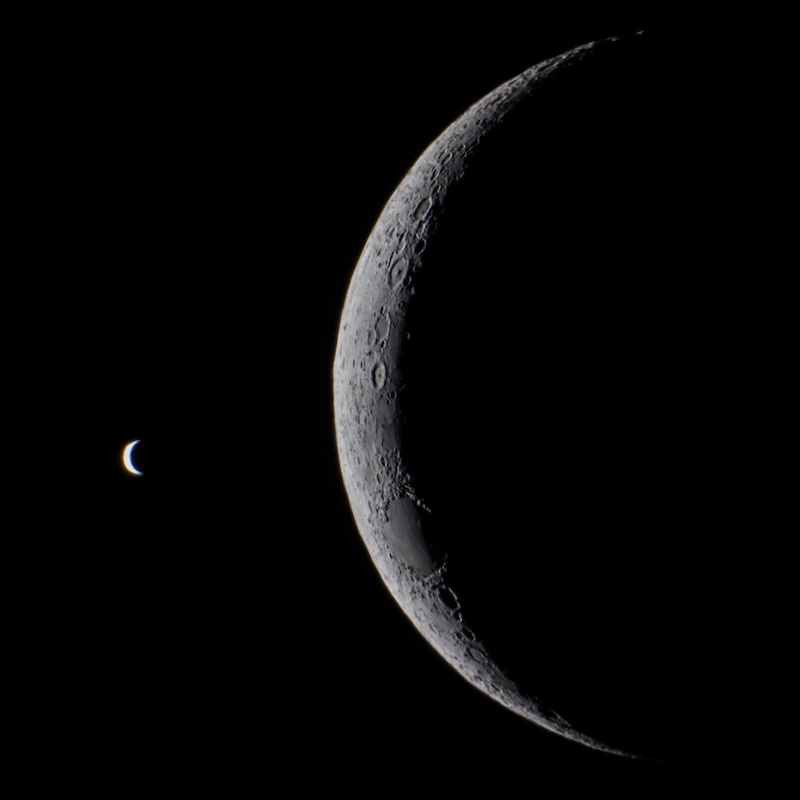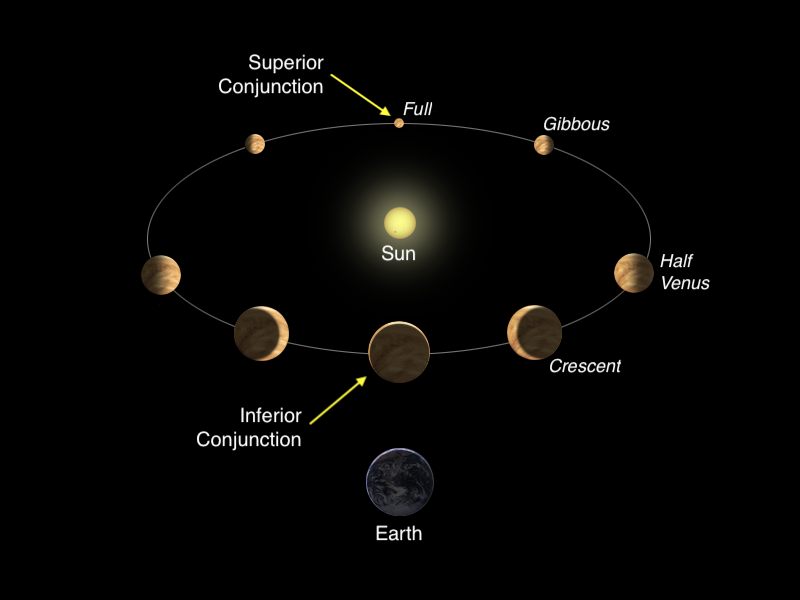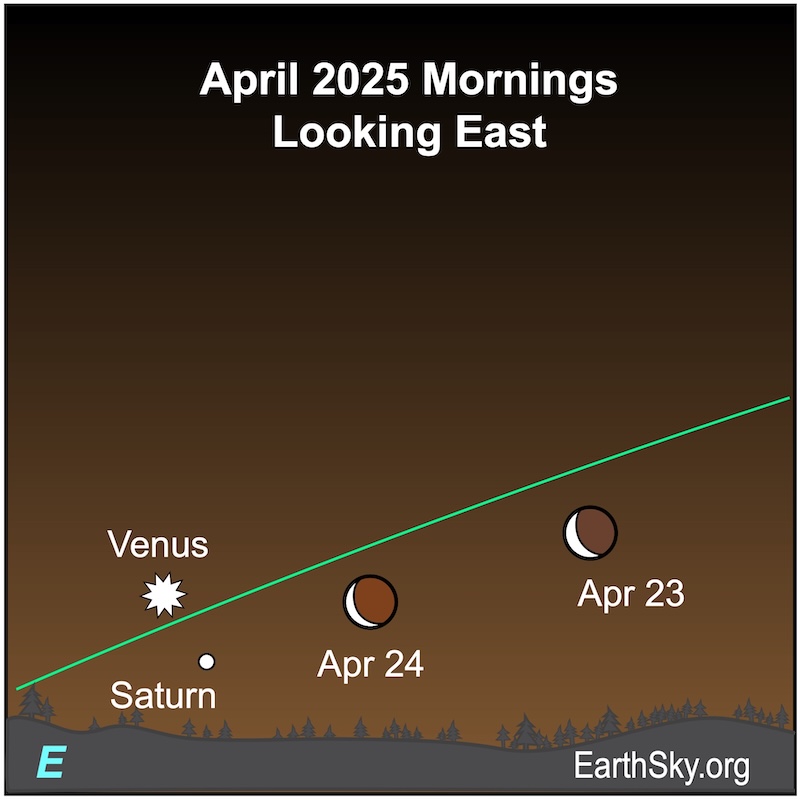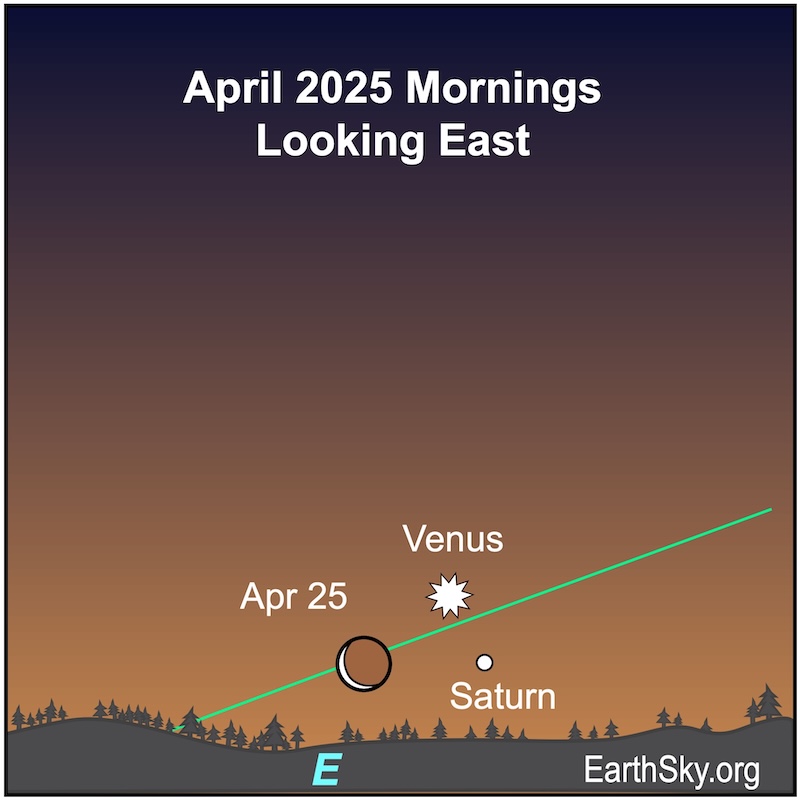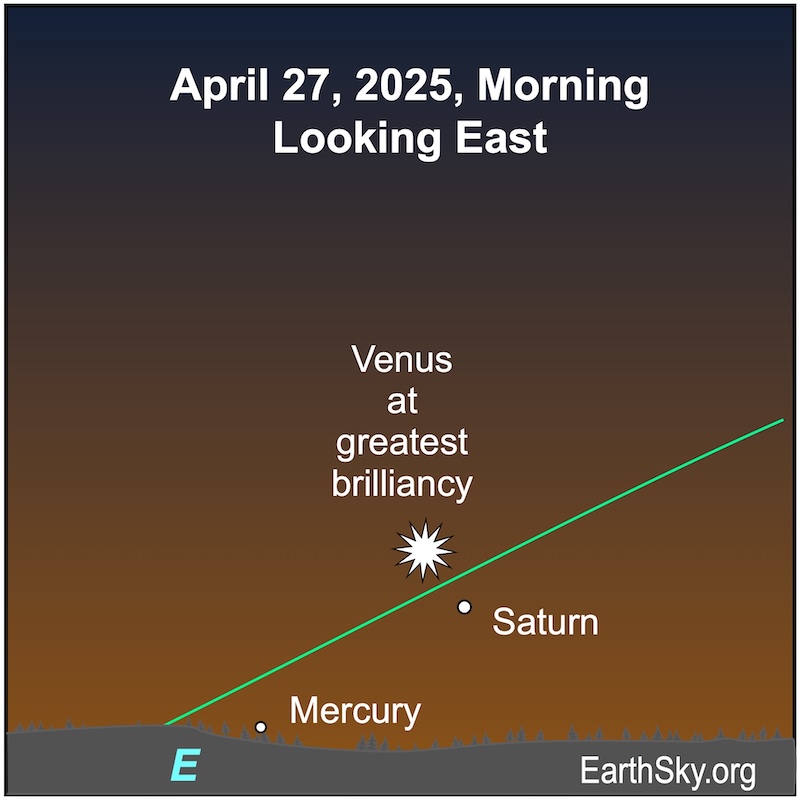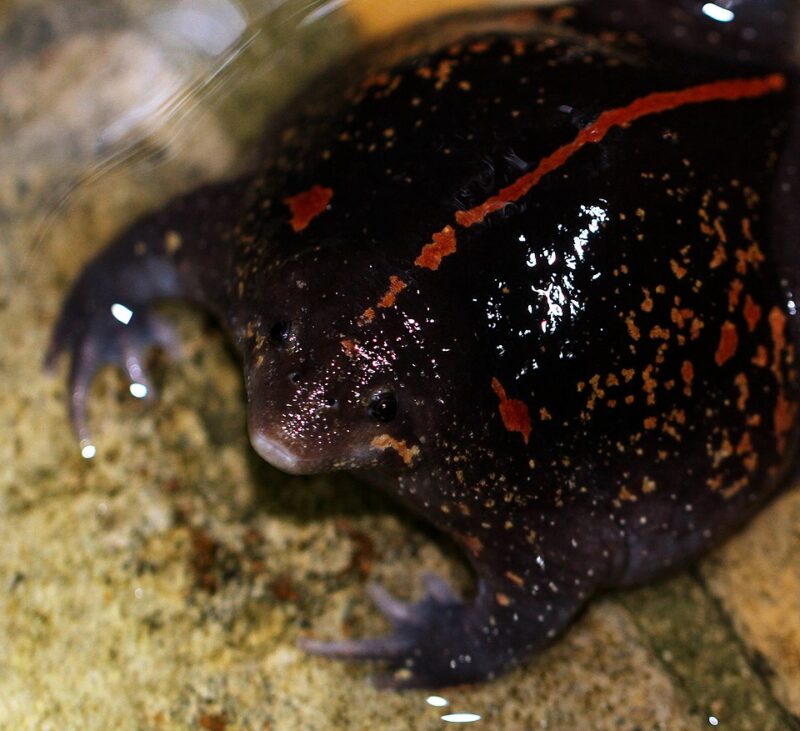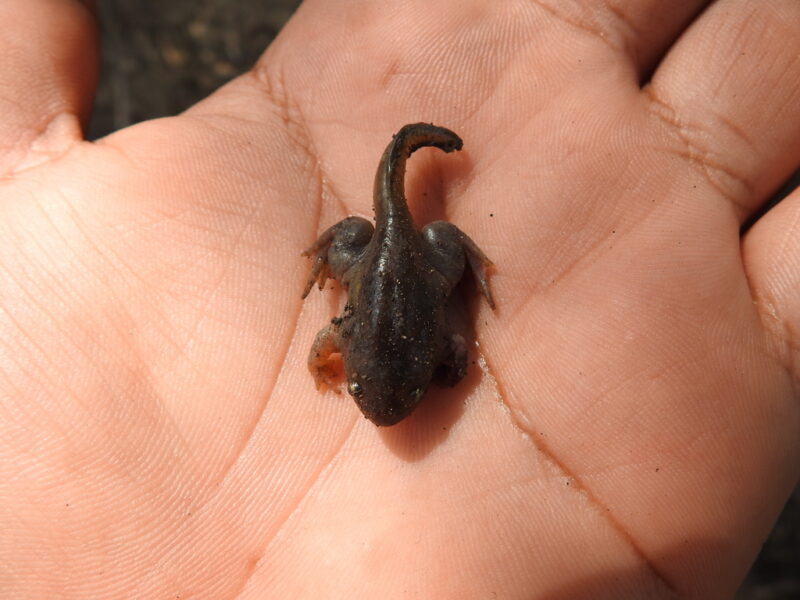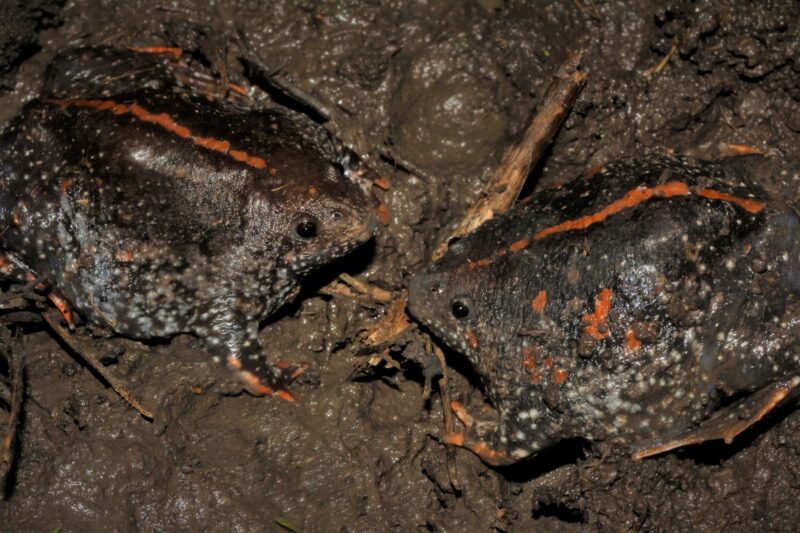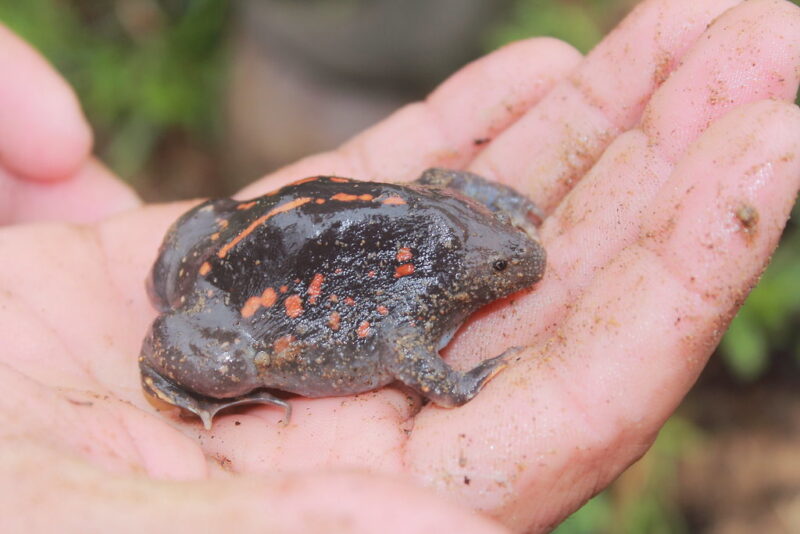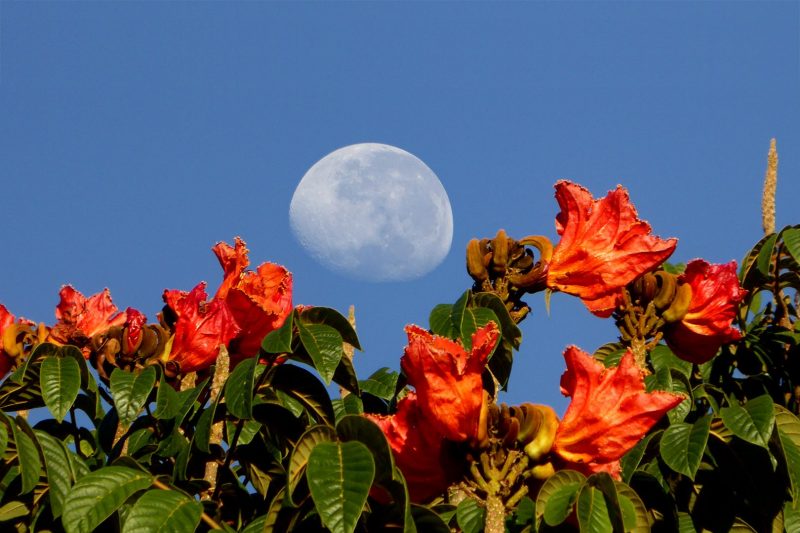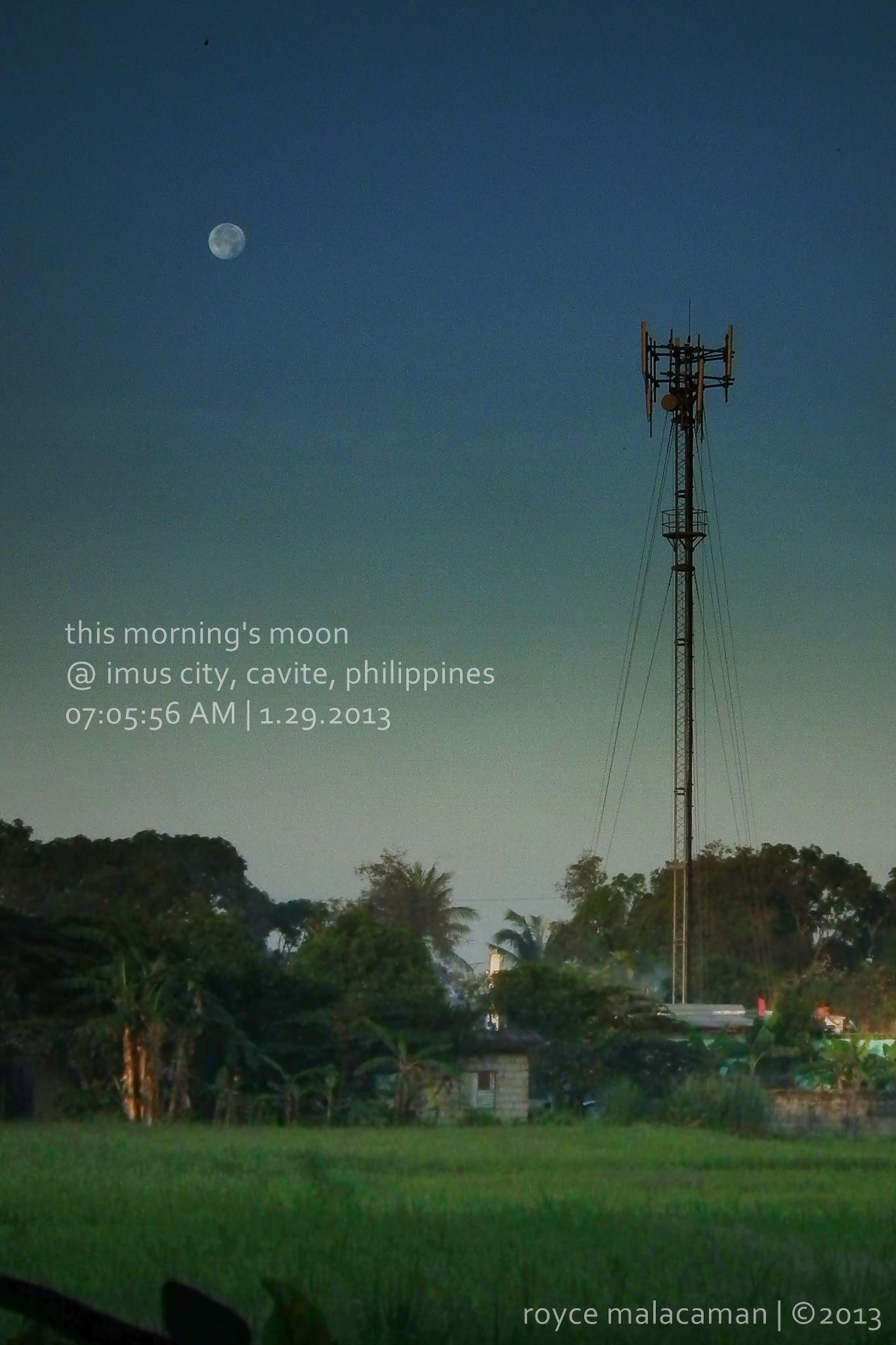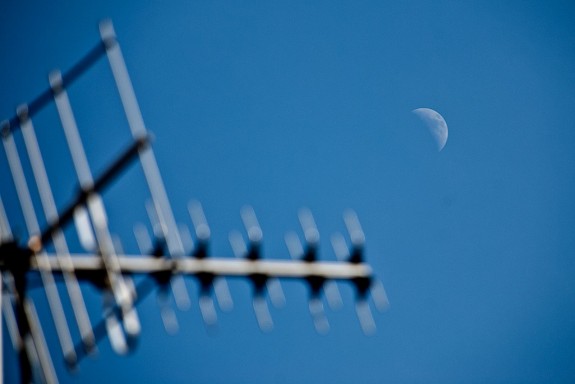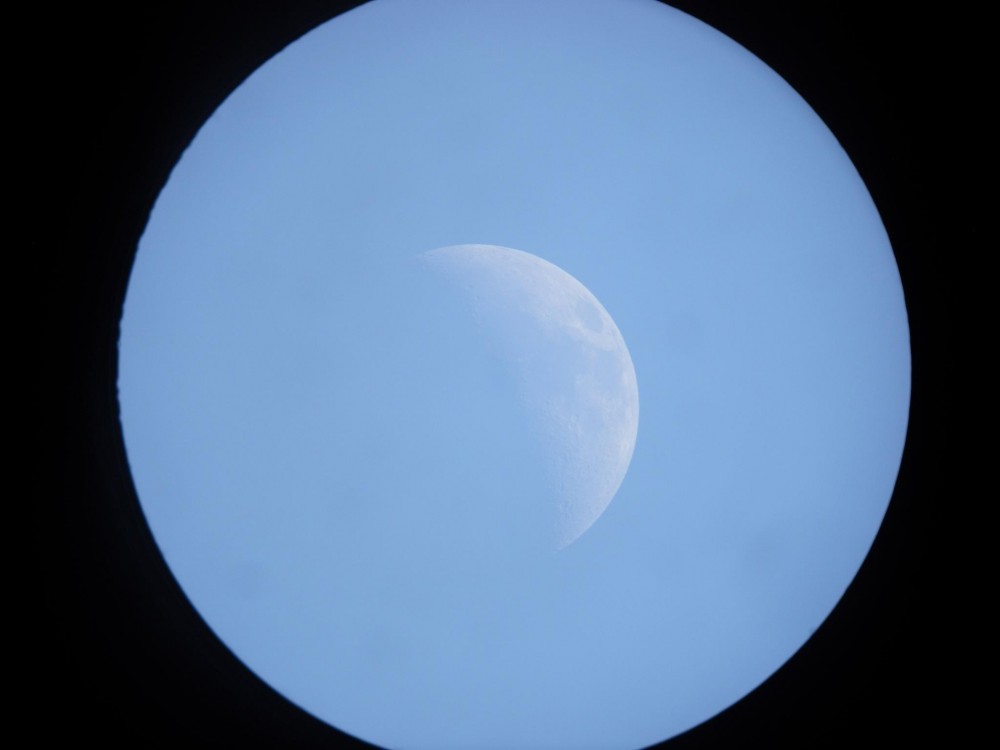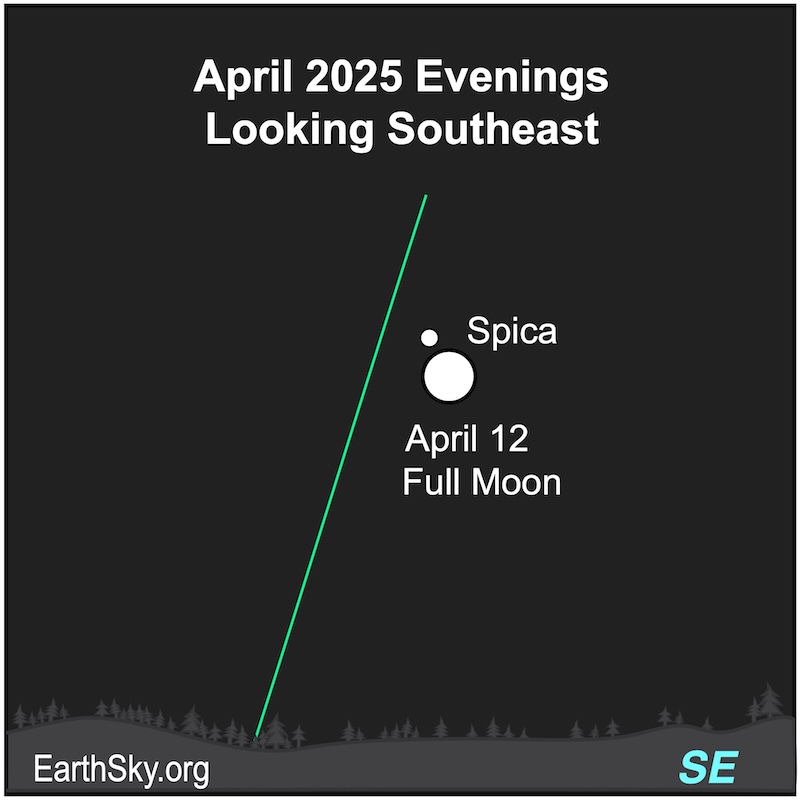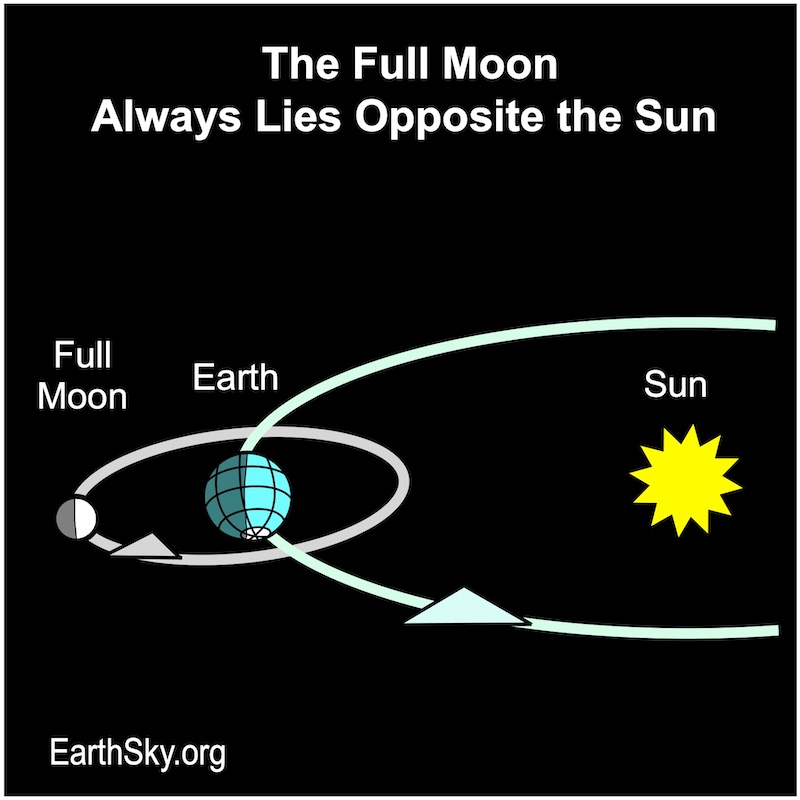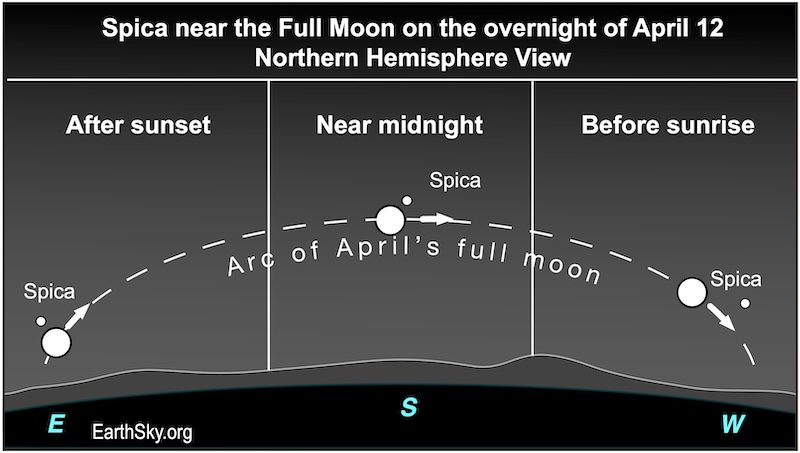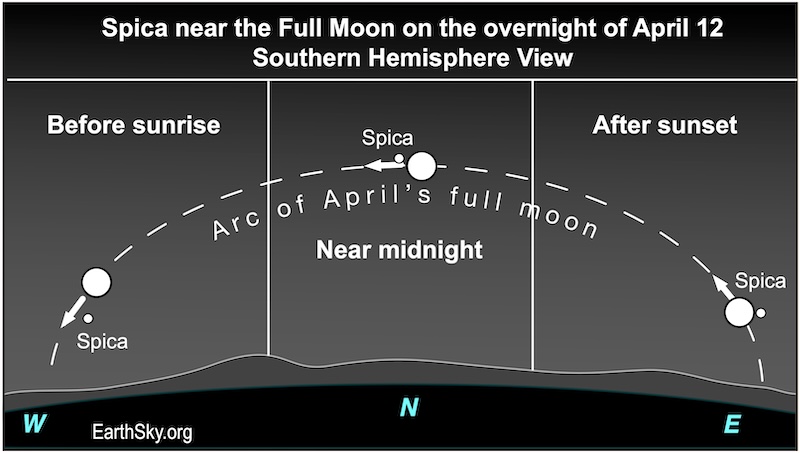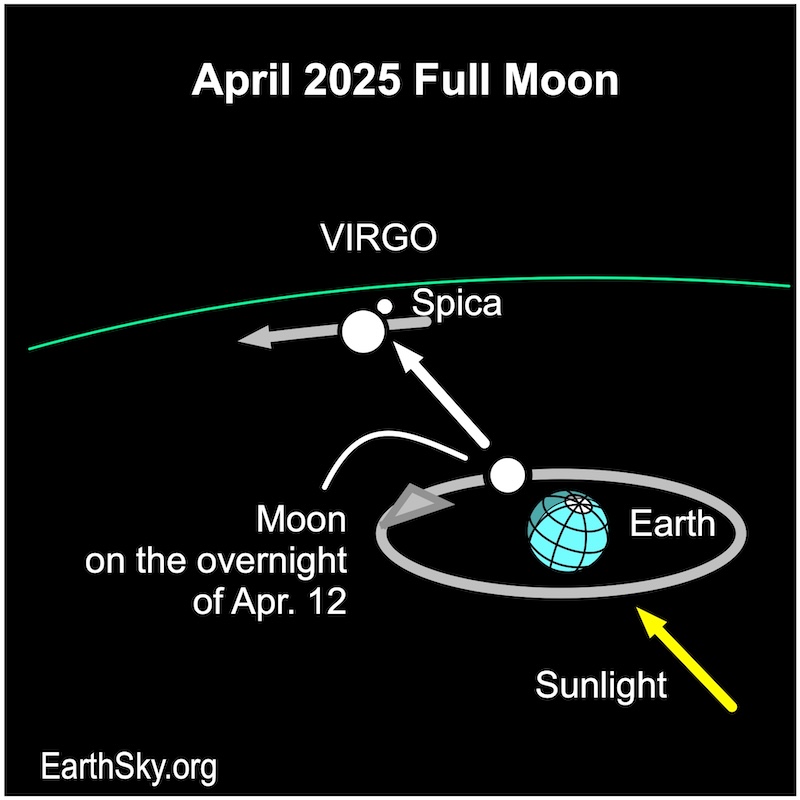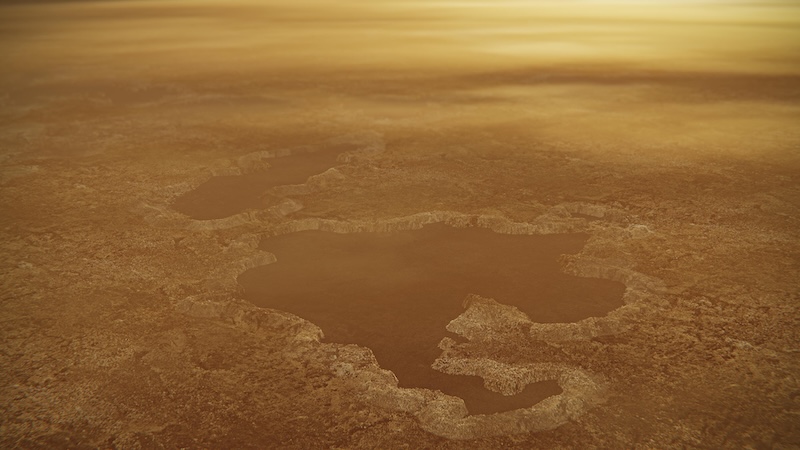
Science matters. Wonder matters. You matter.
Join our 2025 Donation Campaign today.
- Titan, Saturn’s largest moon, is rich in organic molecules. They are on the surface, in the lakes and seas and in the atmosphere. Does that mean Titan could have life?
- Titan’s global subsurface ocean would be the best place for life to survive. But a new study says that only a small amount of organics, as a food source, could make their way into the ocean from the surface.
- Microbial life in Titan’s ocean would likely be limited to only a few pounds’ worth, in the entire ocean.
Is there life on Titan?
Could Saturn’s moon Titan support life? Titan has seas, lakes and rivers of methane and ethane. Its atmosphere is mostly nitrogen, like Earth’s. It even has a subsurface ocean. But it is also extremely cold on the surface, far colder than any place on Earth. On April 7, 2025, an international team of researchers said that while microscopic life could exist on Titan, most likely in the subsurface ocean, it would likely be a tiny amount. Only a few pounds’ worth for the whole moon, in fact.
The researchers published their peer-reviewed findings in The Planetary Science Journal on April 7, 2025.

Abundant organics on Titan
One thing that makes Titan unique among solar system moons is the amount of organic material on its surface. The moon’s atmosphere is filled with a hydrocarbon smog, and hydrocarbons coat the surface as dunes. Hydrocarbons are organic compounds consisting entirely of hydrogen and carbon. Lead author Antonin Affholder at the University of Arizona’s Department of Ecology and Evolutionary Biology said:
In our study, we focus on what makes Titan unique when compared to other icy moons: its plentiful organic content.
Organic molecules are, of course, needed for life. But their presence doesn’t guarantee that life itself exists, however.
Life on Titan?
The organics on Titan could also theoretically serve as food sources for microbes. But while there are lakes and seas on Titan, they are composed of liquid methane and ethane, not water. The extreme cold, where those gases can be liquid, would make life on the surface difficult, if not unlikely. The researchers said the best place to look for life would be in Titan’s global subsurface water ocean. Scientists estimate it to be up to 300 miles (480 km) deep.
Indeed, the vast ocean would seem the ideal place for life to thrive, if it ever got started on Titan. But most of the organic material, as far as we know, is on the surface. And there is limited transfer of material between the surface and underground ocean. As a result, that could make life less likely, or at least sparser. Affholder said:
There has been this sense that because Titan has such abundant organics, there is no shortage of food sources that could sustain life. We point out that not all of these organic molecules may constitute food sources, the ocean is really big, and there’s limited exchange between the ocean and the surface, where all those organics are, so we argue for a more nuanced approach.

Fermentation-based life
So, since the ocean is closed off from the surface, what kind of microbial life could survive in it? The researchers say that it could be based on a very simple chemical process found on Earth: fermentation. Those kinds of microbes would only need organic molecules for food and not require sunlight or even oxygen. It’s the same fermentation process used to bake sourdough bread and brew beer. In fact, it’s one of the earliest known biological processes to have occurred on Earth. As Affholder noted:
Fermentation probably evolved early in the history of Earth’s life, and does not require us to open any door into unknown or speculative mechanisms that may or may not have happened on Titan.
On Titan, fermentation could involve the organic molecule called glycine. It’s the simplest type of amino acid. Affholder said:
We know that glycine was relatively abundant in any sort of primordial matter in the solar system. When you look at asteroids, comets, the clouds of particles and gas from which stars and planets like our solar system form, we find glycine or its precursors in pretty much all those places.
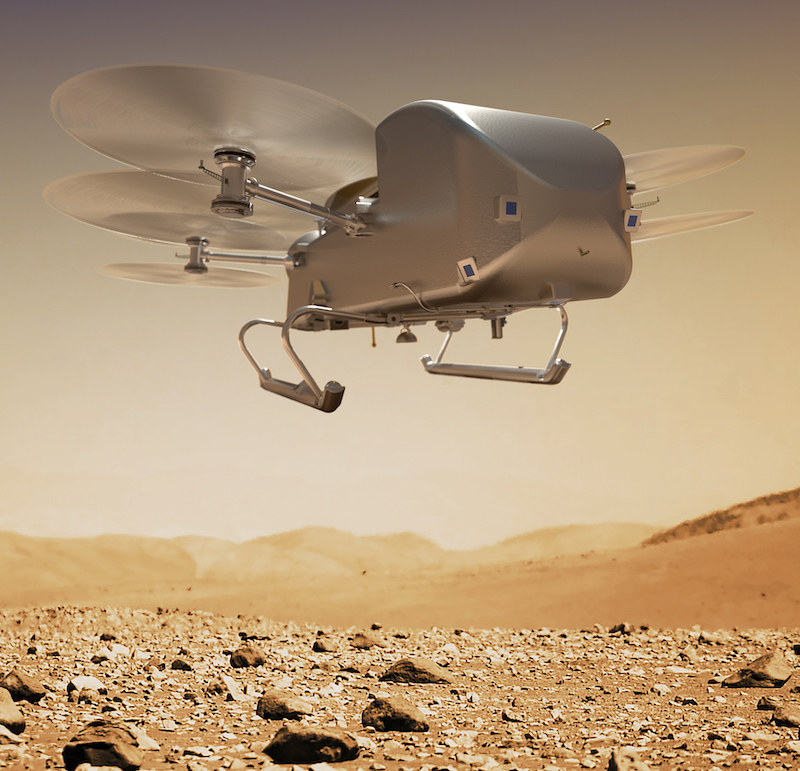
Only a few pounds of life?
So if fermentation-based life could exist in Titan’s ocean, then how much life could the ocean sustain? Ultimately, it depends on how much of the organic material, including amino acids, is suitable as a food source. And that, the study concluded, might only be a small amount. But there should be at least some, however. In previous studies, the same scientists had shown that meteorites hitting Titan’s icy surface would create temporary melt pools of liquid water. That water could sink downward through the ice and bring organic compounds to the ocean below.
However, the new study found it would be a limited amount of organics. It would be enough to sustain a few pounds’ worth of microbes at most in the entire ocean. Affholder said:
Our new study shows that this supply may only be sufficient to sustain a very small population of microbes weighing a total of only a few kilograms [or pounds] at most, equivalent to the mass of a small dog. Such a tiny biosphere would average less than one cell per liter of water over Titan’s entire vast ocean.
On the other hand, at least each microbe would have plenty of room to swim around!
Bottom line: Could there be microbial life on Titan? New research suggests that despite being rich in organics, Titan might only be able to support a few pounds of microbes.
Source: The Viability of Glycine Fermentation in Titan’s Subsurface Ocean
Read more: Is Titan’s subsurface ocean habitable?
Read more: Do Titan’s seas resemble earthly seas? Researchers say yes
The post Is there life on Titan? If so, it’s very rare first appeared on EarthSky.
from EarthSky https://ift.tt/GULHTgh

Science matters. Wonder matters. You matter.
Join our 2025 Donation Campaign today.
- Titan, Saturn’s largest moon, is rich in organic molecules. They are on the surface, in the lakes and seas and in the atmosphere. Does that mean Titan could have life?
- Titan’s global subsurface ocean would be the best place for life to survive. But a new study says that only a small amount of organics, as a food source, could make their way into the ocean from the surface.
- Microbial life in Titan’s ocean would likely be limited to only a few pounds’ worth, in the entire ocean.
Is there life on Titan?
Could Saturn’s moon Titan support life? Titan has seas, lakes and rivers of methane and ethane. Its atmosphere is mostly nitrogen, like Earth’s. It even has a subsurface ocean. But it is also extremely cold on the surface, far colder than any place on Earth. On April 7, 2025, an international team of researchers said that while microscopic life could exist on Titan, most likely in the subsurface ocean, it would likely be a tiny amount. Only a few pounds’ worth for the whole moon, in fact.
The researchers published their peer-reviewed findings in The Planetary Science Journal on April 7, 2025.

Abundant organics on Titan
One thing that makes Titan unique among solar system moons is the amount of organic material on its surface. The moon’s atmosphere is filled with a hydrocarbon smog, and hydrocarbons coat the surface as dunes. Hydrocarbons are organic compounds consisting entirely of hydrogen and carbon. Lead author Antonin Affholder at the University of Arizona’s Department of Ecology and Evolutionary Biology said:
In our study, we focus on what makes Titan unique when compared to other icy moons: its plentiful organic content.
Organic molecules are, of course, needed for life. But their presence doesn’t guarantee that life itself exists, however.
Life on Titan?
The organics on Titan could also theoretically serve as food sources for microbes. But while there are lakes and seas on Titan, they are composed of liquid methane and ethane, not water. The extreme cold, where those gases can be liquid, would make life on the surface difficult, if not unlikely. The researchers said the best place to look for life would be in Titan’s global subsurface water ocean. Scientists estimate it to be up to 300 miles (480 km) deep.
Indeed, the vast ocean would seem the ideal place for life to thrive, if it ever got started on Titan. But most of the organic material, as far as we know, is on the surface. And there is limited transfer of material between the surface and underground ocean. As a result, that could make life less likely, or at least sparser. Affholder said:
There has been this sense that because Titan has such abundant organics, there is no shortage of food sources that could sustain life. We point out that not all of these organic molecules may constitute food sources, the ocean is really big, and there’s limited exchange between the ocean and the surface, where all those organics are, so we argue for a more nuanced approach.

Fermentation-based life
So, since the ocean is closed off from the surface, what kind of microbial life could survive in it? The researchers say that it could be based on a very simple chemical process found on Earth: fermentation. Those kinds of microbes would only need organic molecules for food and not require sunlight or even oxygen. It’s the same fermentation process used to bake sourdough bread and brew beer. In fact, it’s one of the earliest known biological processes to have occurred on Earth. As Affholder noted:
Fermentation probably evolved early in the history of Earth’s life, and does not require us to open any door into unknown or speculative mechanisms that may or may not have happened on Titan.
On Titan, fermentation could involve the organic molecule called glycine. It’s the simplest type of amino acid. Affholder said:
We know that glycine was relatively abundant in any sort of primordial matter in the solar system. When you look at asteroids, comets, the clouds of particles and gas from which stars and planets like our solar system form, we find glycine or its precursors in pretty much all those places.

Only a few pounds of life?
So if fermentation-based life could exist in Titan’s ocean, then how much life could the ocean sustain? Ultimately, it depends on how much of the organic material, including amino acids, is suitable as a food source. And that, the study concluded, might only be a small amount. But there should be at least some, however. In previous studies, the same scientists had shown that meteorites hitting Titan’s icy surface would create temporary melt pools of liquid water. That water could sink downward through the ice and bring organic compounds to the ocean below.
However, the new study found it would be a limited amount of organics. It would be enough to sustain a few pounds’ worth of microbes at most in the entire ocean. Affholder said:
Our new study shows that this supply may only be sufficient to sustain a very small population of microbes weighing a total of only a few kilograms [or pounds] at most, equivalent to the mass of a small dog. Such a tiny biosphere would average less than one cell per liter of water over Titan’s entire vast ocean.
On the other hand, at least each microbe would have plenty of room to swim around!
Bottom line: Could there be microbial life on Titan? New research suggests that despite being rich in organics, Titan might only be able to support a few pounds of microbes.
Source: The Viability of Glycine Fermentation in Titan’s Subsurface Ocean
Read more: Is Titan’s subsurface ocean habitable?
Read more: Do Titan’s seas resemble earthly seas? Researchers say yes
The post Is there life on Titan? If so, it’s very rare first appeared on EarthSky.
from EarthSky https://ift.tt/GULHTgh


